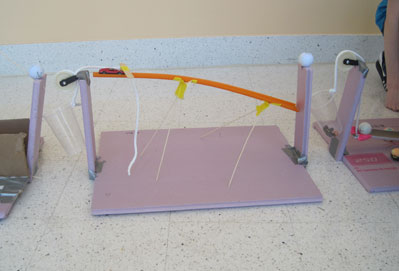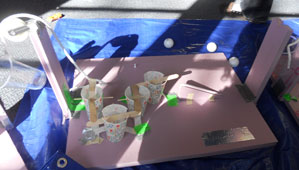Preparation
Preparing bases
Cut the blue foam into 2ft x 2ft squares. Make one for every team of two students, and two extras. On one side (the back), build a 1ft stand that a golf ball can rest on. Support the ball from below and behind, so that the only direction it can fall in is off the foam base.
On the other side (the front), build a tower the same size with a pulley on top. Loop a short piece of string over the pulley, with a plastic cup attached to one side. When empty, the cup should rest a few inches off the ground.

This base is the key to modularity. Hitting the back stand, even lightly, should knock the ball off of the stand. Dropping a ball in the cup should pull it down several inches, pulling the string up on the other side and providing an excellent trigger mechanism.
Making examples

Make at least two examples to show the kids. The examples should cover most of the space available on the board. Be sure to have more than just an object going down a ramp. It may be useful to show off components such as levers flipping each other, bouncing off a trampoline, releasing elastic energy from a rubber band, or dropping a ball into a funnel.


